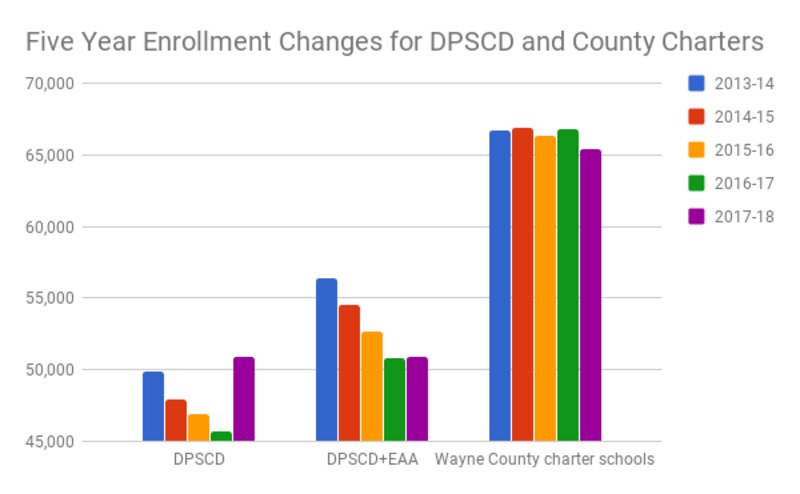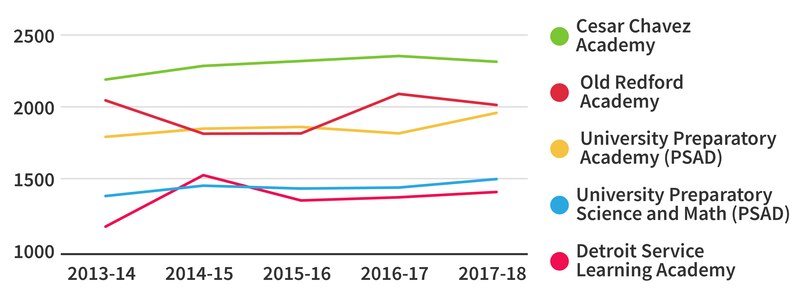What Detroit district leaders have been saying for months is true: After many years of losing students, enrollment in the Detroit district grew this year while charter enrollment fell.
State data released last month show that district enrollment is up about 2 percent over the last five years while Wayne County charter enrollment is down about 2 percent. It’s the first time in over a decade that the district has gained students.
The data are final audited enrollment numbers that the state uses to determine how much money it pays out to schools.
Detroit district Superintendent Nikolai Vitti boasted at a press conference last fall that the district’s enrollment had exceeded the gains from the newly absorbed students in the dissolved state-run Education Achievement Authority schools. He said the district had added more than a thousand former charter students.
Months later, the final audited enrollment numbers show the gains were modest. The district picked up about 450 more students beyond the schools that were in the EAA, bringing total enrollment to 50,875.
The numbers Vitti referenced weren’t wrong, exactly. Enrollment is a snapshot in time, and Detroit students tend to move from school to school with some frequency.
The district gained 5,155 students from last year, with about 4,700 students coming from the state-run schools. Meanwhile, six charters across the county, with about 2,800 students in total, closed.

Charters are still leading in overall enrollment. Detroit already has one of the largest charter school enrollments in the nation, with more than half of its roughly 100,000 students attending charters in the city and surrounding suburbs.
But charters have taken a public relations beating in Detroit in recent years, notably during Education Secretary Betsy DeVos’ confirmation hearing when critics linked the poor quality of schools in Detroit to pro-charter laws that were pushed in Michigan by DeVos and her political advocacy organization.
But the public criticism of the charters hasn’t significantly their hurt enrollment in Detroit.
Some of the city’s biggest charter districts — Cesar Chavez Academy, University Preparatory Academy, and the Detroit Service Learning Academy — have all seen a rise in enrollment over the past five years, and they are largely stable this year.

The Detroit district’s main competitors are those in the same neighborhoods, which means the increase in city charter enrollment could be a problem, especially since new charters like Cornerstone Jefferson-Douglass Academy are popping up in the city.
Over the past five years, charters in Oakland and Macomb counties have grown 7 and 3 percent respectively. Many Detroit students — more than 30,000 — leave the city every day to attend schools in surrounding cities.
Grabbing the students leaving for charters in Detroit and surrounding cities is an important fight for Vitti. Per-pupil state funding is how schools pay for the majority of their programs and staff, and the $7,631 minimum for every student adds up quickly. Vitti announced last month that in part because of increased enrollment, the district can now pay for gym teachers, guidance counselors, and many other positions its schools have been missing for years.
Search through this table to find an individual school district and its change in enrollment over the last five years.


